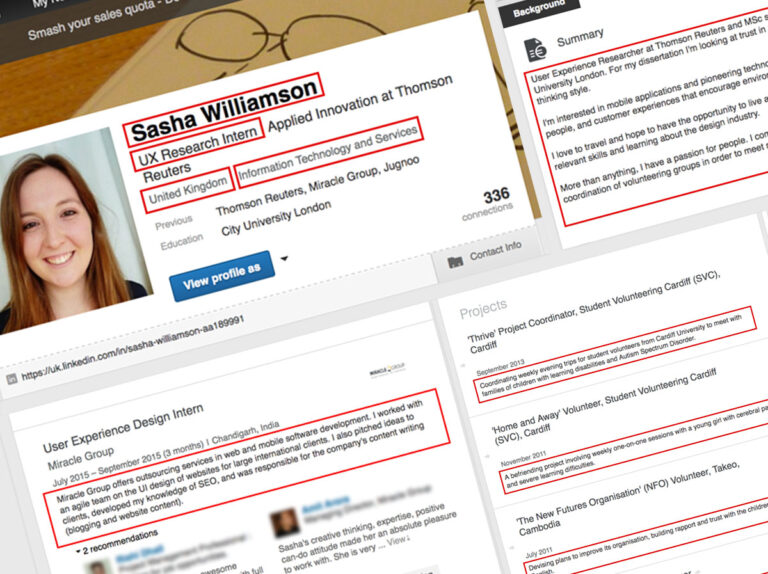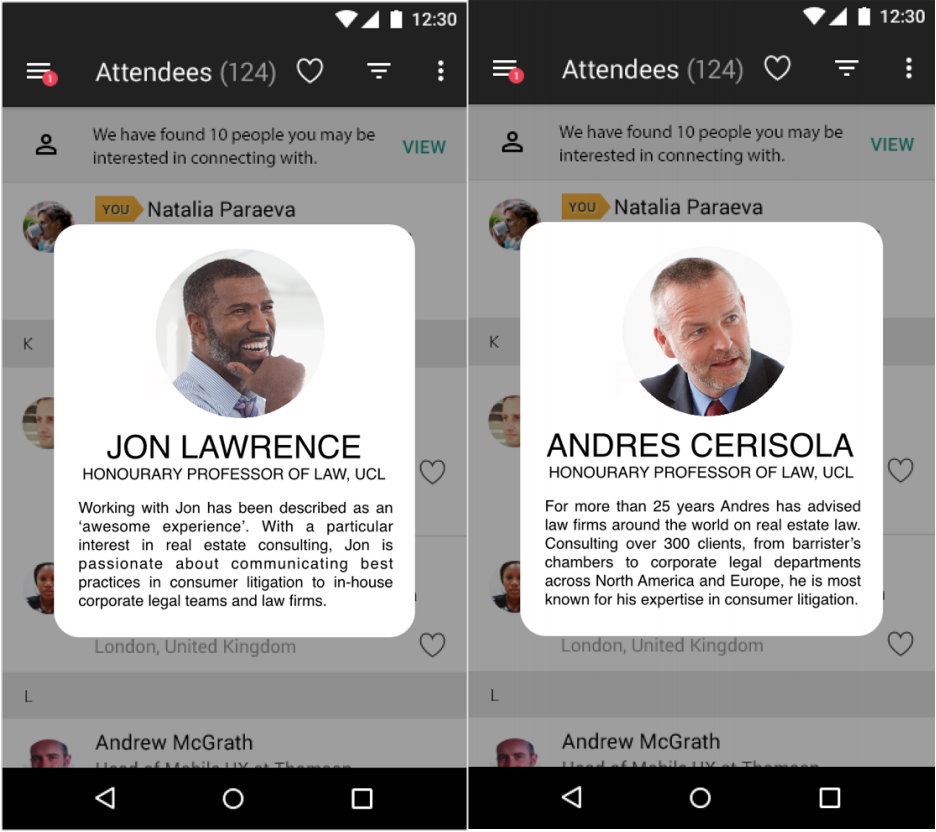To understand whether language use on LinkedIn is a good indicator of their Need for Affect or Need for Cognition (e.g. the degree to which a user responds to emotional or numerical information).

Convene is a Thomson Reuters product for conference information. The app shares information about attendees, speakers, and sessions at large professional events. A recommendation feature was proposed to facilitate networking and initiate new customer interest.

Using recommendations to facilitate networking is uncommon in the professional space; many professionals prefer to network face to face or do their own research on other attendees. Recommendations needed to be persuasive and trustworthy.
As part of my thesis research, I wrote the explanations which accompanied recommendations. In order to increase trust and persuasion, I matched the language of explanations to a user’s information need; specifically, their Need for Affect (response to emotional information) and Need for Cognition (response to numerical information). As a team, we prototyped the recommendations feature and I ran formative usability testing.
To understand whether language use on LinkedIn is a good indicator of their Need for Affect or Need for Cognition (e.g. the degree to which a user responds to emotional or numerical information).
To understand whether trust and persuasion in recommendations increase if explanation language use is suited to user information needs (Need for Affect and Need for Cognition).
To address the first objective, participants completed two scales to determine their Need for Affect and Need for Cognition.
In the same survey they also consented to their LinkedIn profiles being screened for language use.
The sample needed to be large and varied to avoid false positive errors, e.g. where patterns between language use and information need are falsely detected because the sample is not generalisable.
“I would prefer complex to simple problems”
Example statement from the Need for Cognition scale.
Participants rated their agreement from 1 (extremely uncharacteristic of me) to 5 (extremely characteristic of me).

To understand whether Need for Affect or Need for Cognition can predict language use:
“A committed psychology graduate with a passion for teaching and child clinical psychology…I am currently enjoying my role as a secondary school science teacher for Teach First, working towards a vision for a day where no child’s educational success is limited by their socioeconomic background.”

Between-group comparisons were made based on self- reported Need for Affect and Need for Cognition, and LinkedIn word count according to the LIWC.
For example, the analysis showed that participants with higher Need for Cognition (more numerical information needs) were significantly less likely to use words in the ‘positive feelings’ linguistic category.
These patterns were enough to suggest that language may also be interpreted differently by users. Therefore, we proceeded to objective 2.
To address the second objective, the UX designer I worked with created some high fidelity prototypes and I inserted the recommendations and explanations.
As the information needs and other personality variables of participants varied greatly, this part of the study needed to be conducted within groups.
I created two copies of the same recommendation, only differing by the language used in their explanations.
The biggest challenge was to avoid introducing design variables which may influence trust and persuasion.

Testing was run with a separate participant pool to objective one. Each session was conducted as a moderated think aloud session where participants reviewed recommendations and rated them on trust and persuasion. Using a think-aloud approach I was able to explain or invalidate later ratings of trust or persuasion for each recommendation. For example, whether scores of trust were given based on the language or another reason.
At the end of the session, the participants also completed the Need for Affect and Need for Cognition scales.
“Passionately, as opposed to? What if he doesn’t work passionately, you can still be a bloody good lawyer or whatever can’t you, why passionately?”
I tested for an interaction between explanation language use, participant Need for
Although statistically significant, the results tended to suggest that using language which opposed a user’s Need for Affect or Need for Cognition could reduce trust.
This research was first of its kind to investigate
It initiated
Upon reflection,